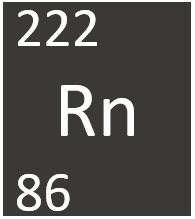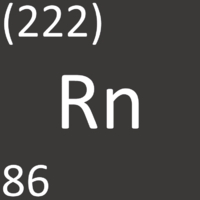Difference between revisions of "Radon"
| Line 13: | Line 13: | ||
: An [[atom]] of [[Radon]] has a full [[Outer Shell|outer shell]] so it is [[inert]]. | : An [[atom]] of [[Radon]] has a full [[Outer Shell|outer shell]] so it is [[inert]]. | ||
==Key Stage 4== | ==Key Stage 4== | ||
| + | [[File:RnKS4.PNG|right|200px|thumb|The [[Chemical Symbol|chemical symbol]] for [[Radon]].]] | ||
===Meaning=== | ===Meaning=== | ||
[[Radon]] is a [[radioactive]] [[Group 0]] [[element]], on the [[Periodic Table]], with 86 [[proton]]s in the [[Atomic Nucleus|nucleus]]. | [[Radon]] is a [[radioactive]] [[Group 0]] [[element]], on the [[Periodic Table]], with 86 [[proton]]s in the [[Atomic Nucleus|nucleus]]. | ||
Latest revision as of 14:41, 5 March 2020
Contents
Key Stage 2
Meaning
Key Stage 3
Meaning
Radon is a radioactive Group 0 element, on the Periodic Table, with an atomic number of 86.
About Radon
- Radon has the chemical formula Rn.
- Radon has 86 protons and 136 neutrons in its nucleus giving it an Atomic Number of 86 and an atomic mass of 222.
- Radon is a Noble Gas.
- Radon is a gas at room temperature.
- An atom of Radon has a full outer shell so it is inert.
Key Stage 4
Meaning
Radon is a radioactive Group 0 element, on the Periodic Table, with 86 protons in the nucleus.
About Radon
- Radon has the chemical formula Rn.
- The most stable isotope of Radon has 136 neutrons in its nucleus giving it an atomic mass of 222.
- Radon is a Noble Gas.
- Radon is a gas at standard temperature and pressure.
- An atom of Radon has a full outer shell so it is inert.

